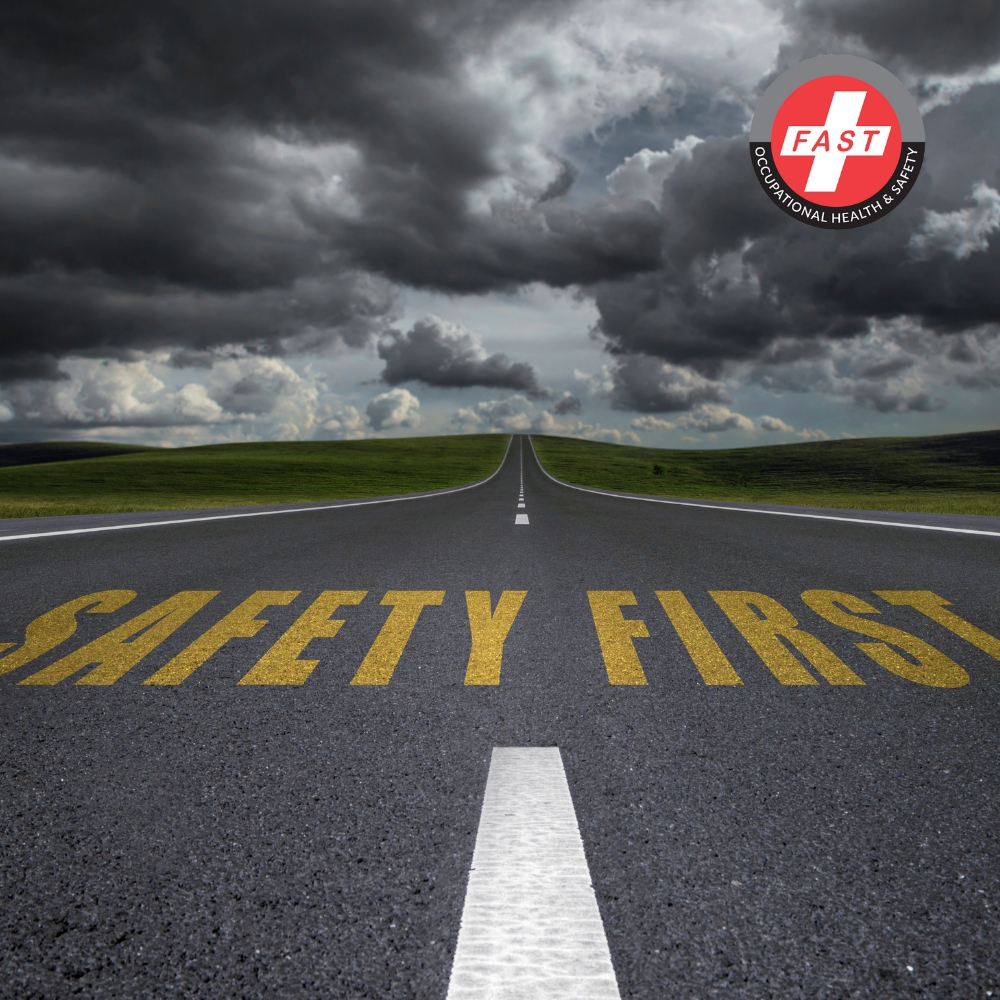
Blog
National Safety Month – Week 3: Prioritizing Roadway Safety

As Week 3 of National Safety Month kicks off, we’re focusing on a vital topic: Roadway Safety.
Every Canadian has a role to play in keeping our roads safe. In Ontario alone, motor vehicle collisions remain a leading cause of injury and death. Key risk factors—like distracted driving, speeding, and impaired driving—contribute significantly to these tragic outcomes.
Whether you’re driving, cycling, walking, or working in a construction zone, your actions matter. This week, we’re sharing practical tips, proven strategies, and essential training resources to help everyone make smarter, safer choices on the road.

Why Roadway Safety Matters
Staying safe on the road doesn’t just protect you—it protects everyone around you. From commuters and cyclists to school children and construction crews, every person who uses the road benefits when drivers stay focused and informed.
Let’s take a closer look at the current state of roadway safety in Canada and how we can address the most pressing risks.
The State of Roadway Safety in Canada
According to Public Health Ontario, motor vehicle collisions remain one of the top causes of injury and death in the province—a trend seen nationwide. Transport Canada’s 2023 National Collision Statistics reveal:
- 1,964 fatalities — the highest number in a decade (up 1.7% from 2022)
- 9,261 serious injuries — the highest in five years
- 118,838 total injuries — a 3.6% decrease from the previous year
Other key findings:
- 32.6% of driver fatalities involved individuals not wearing seat belts
- Vulnerable road users (pedestrians, cyclists, motorcyclists) remain at higher risk
- Rural roads show higher fatality rates due to speed limits, response times, and road conditions
These figures show that while progress has been made, the work to protect all road users is far from over.
For more detailed information, you can explore Transport Canada’s Canadian Motor Vehicle Traffic Collision Statistics: 2023 and the interactive Motor Vehicle Casualties Dashboard
Leading Causes of Roadway Accidents
Understanding the root causes of accidents helps us prevent them. The most common contributors in Canada include:
Distracted Driving
Using a phone, eating, or even daydreaming behind the wheel takes your focus off the road. Public campaigns and enforcement aim to shift driver habits through education and penalties.
Impaired Driving
Whether caused by alcohol, drugs, or fatigue, impaired driving remains a serious issue. Zero-tolerance laws and awareness efforts are key to reducing these preventable crashes.
Speeding
Driving too fast reduces reaction time and increases the severity of collisions. Infrastructure upgrades, visible enforcement, and public education all play a role in slowing drivers down.
Seat Belts and Child Restraints
Seat belts are one of the simplest and most effective safety tools, yet non-use continues to claim lives. Promoting proper use and installation remains a top priority.
Construction Zone Safety Measures
Construction zones are especially hazardous. Narrow lanes, changing traffic patterns, and workers close to moving vehicles demand your full attention.
Role of Traffic Control Persons (TCPs)
TCPs manage the flow of traffic and ensure everyone—drivers and workers—stays safe. They are professionally trained to:
- Use clear hand signals
- Understand traffic dynamics
- React to emergency situations
Always follow their directions carefully—they are there for your safety.
Importance of Signage
Signs in construction zones give you advance warning of changes. The three main types include:
⚠️ Warning Signs – alert you to hazards like lane reductions
⛔ Regulatory Signs – enforce speed limits or road closures
➡️ Guide Signs – direct you safely through or around work zones
Signs must be placed properly, remain visible, and be updated as conditions change. Pay close attention and adjust your driving accordingly.
Your Role as a Driver
- Slow down when approaching work zones.
- Follow signage and signals—they’re designed to keep everyone safe.
- Stay alert and be ready for sudden changes in traffic flow.
Construction zones are temporary, but your safety is permanent. By staying aware and cooperative, you help protect road workers—and get everyone home safely.
Defensive Driving Techniques
Defensive driving is a proactive way to stay safe on the road. It means thinking ahead, staying alert, and making smart decisions to prevent accidents—no matter what other drivers are doing.
Key Defensive Driving Habits
Practicing defensive driving means using everyday techniques that help reduce risks and keep traffic flowing safely. Here are the essentials:
- Keep a Safe Following Distance: Leave enough space between your vehicle and the one ahead. This gives you more time to react to sudden stops, debris, or changing traffic conditions.
- Stay Alert and Aware: Always be aware of your surroundings. Check mirrors often, watch for blind spots, and be prepared for unexpected actions from other drivers or pedestrians.
- Avoid Distractions: Keep your focus on the road. Don’t text, check your phone, eat, or get too involved in conversations while driving. A few seconds of distraction can lead to disaster.
- Adjust for Weather and Road Conditions: Slow down in rain, fog, or snow. Be extra cautious near schools, pedestrian crossings, and construction zones. Defensive drivers adjust to match the environment.
Why Defensive Driving Matters
Defensive driving doesn’t just keep you safe—it offers real benefits for you and your community:
- Fewer Collisions: Anticipating hazards and staying alert helps prevent crashes before they happen.
- Lower Costs: Smooth, controlled driving reduces fuel use and minimizes wear on your brakes, tires, and engine.
- Insurance Discounts: Many insurance providers offer lower premiums for drivers who complete certified defensive driving courses.
- Better Traffic Flow: When more drivers use defensive techniques, traffic becomes safer and more predictable—benefiting everyone on the road.
By making defensive driving part of your daily routine, you’re helping create safer roads for everyone—from families and cyclists to pedestrians and construction workers.
Let’s Drive Change—Together
Roadway safety is something we all share. Whether you’re commuting to work, delivering goods, or enjoying a weekend drive, every decision you make behind the wheel matters. Staying alert, practicing defensive driving, and slowing down in construction zones all help protect lives—yours and others.
At FAST Rescue, we’re proud to support safer roads and communities through trusted training and compliance solutions. From Traffic Control Awareness to Defensive Driving and Workplace Health & Safety Programs, our courses give you and your team the knowledge and confidence to prevent accidents and respond effectively in emergencies.
With our Training & Compliance System you can deliver customized, trackable training that’s relevant, up-to-date, and built to meet the needs of your organization.

Get in Touch
Need help choosing the right training for your workplace or fleet? Our team is here to help!
📧 Email: info@fast-rescue.com
📞 Phone: 1-866-706-7283
Stay safe. Stay informed. Stay compliant—with FAST Rescue by your side.








